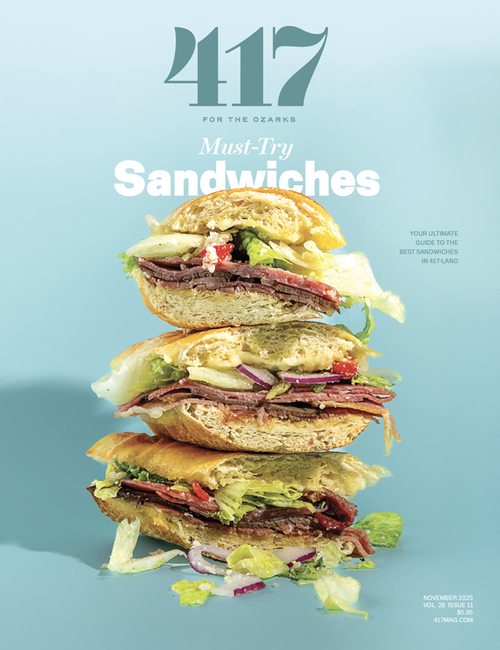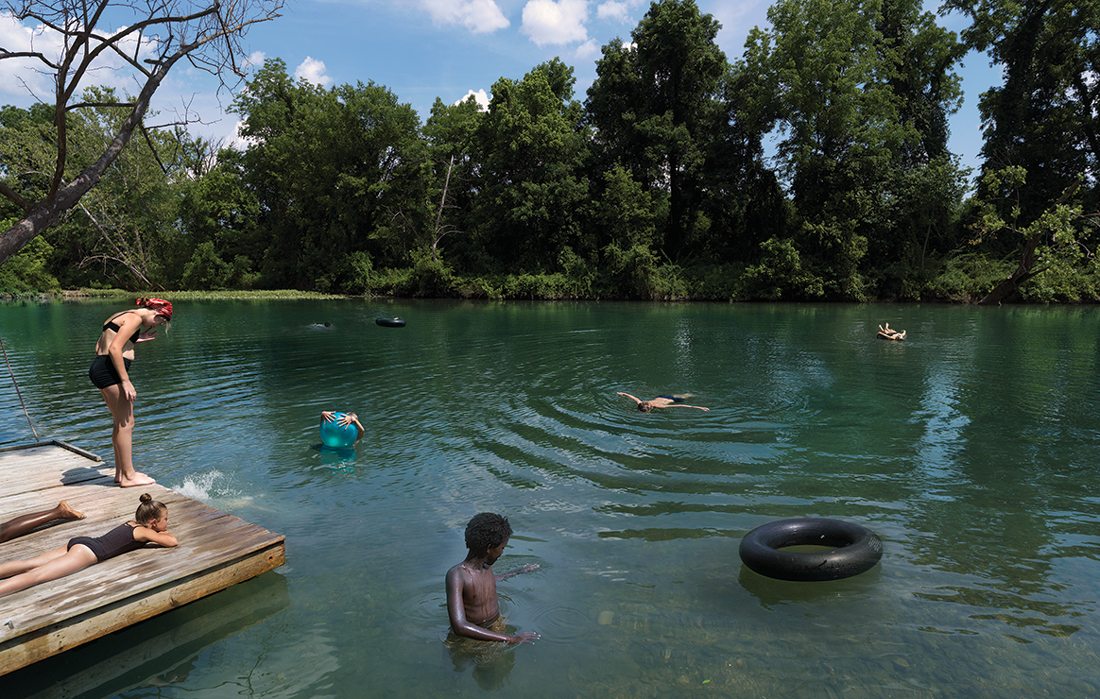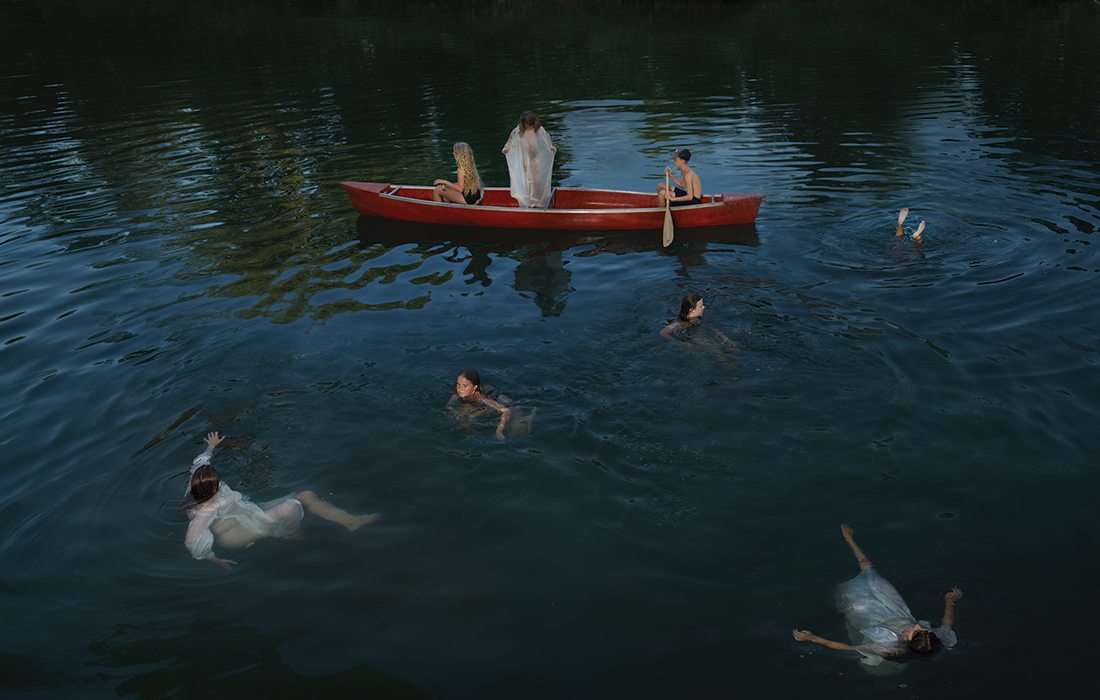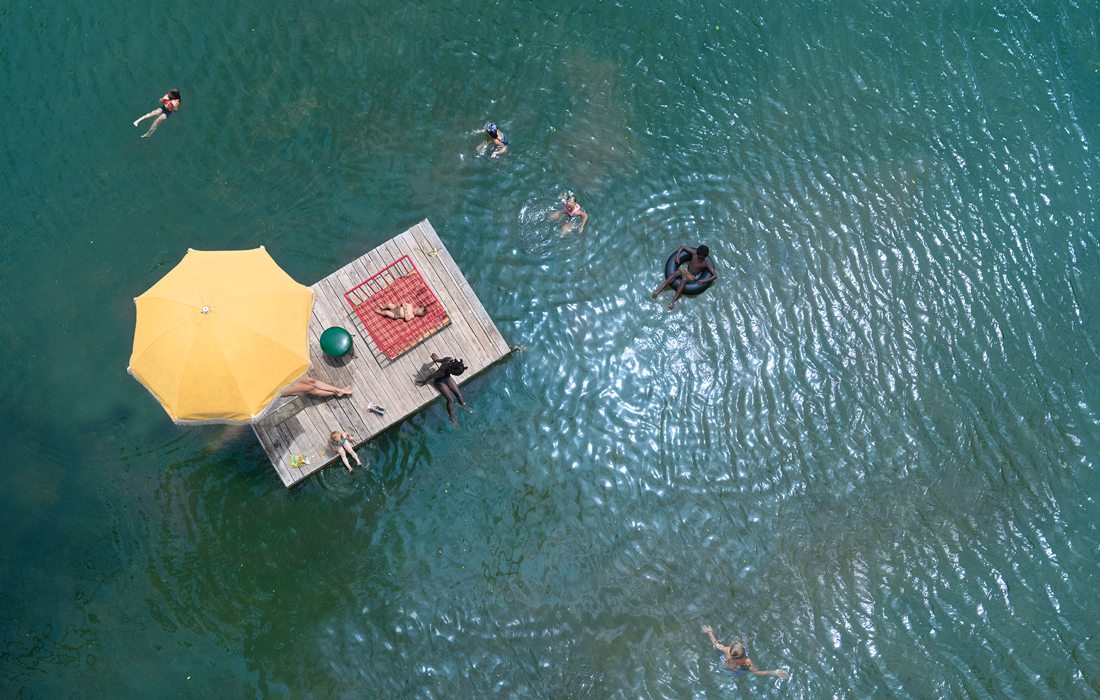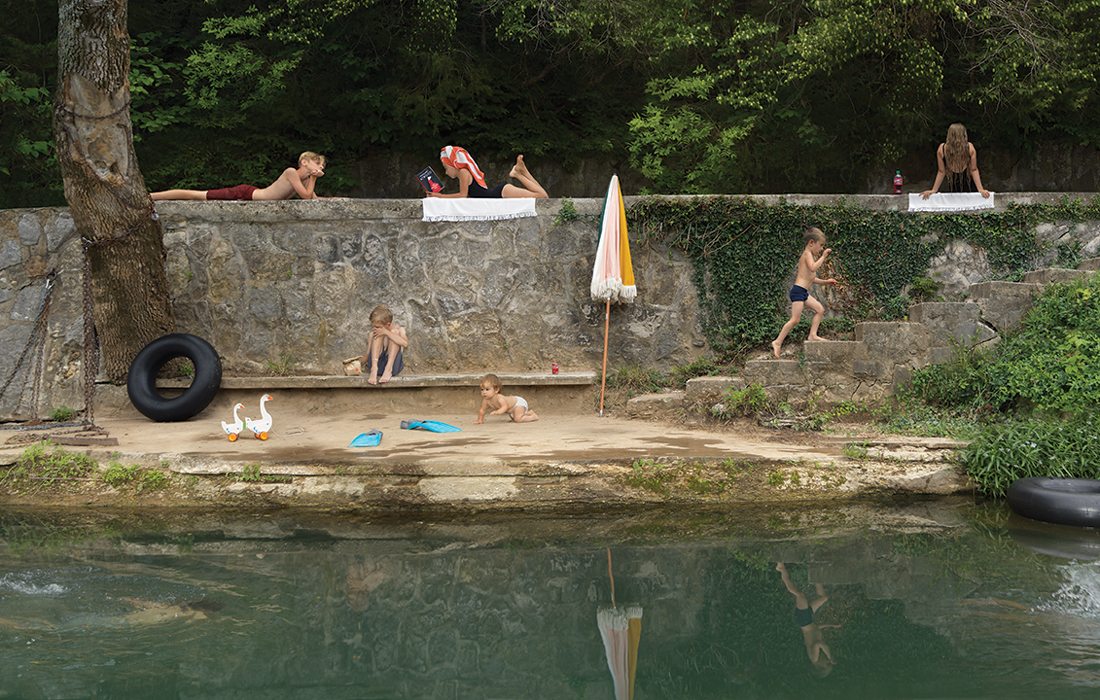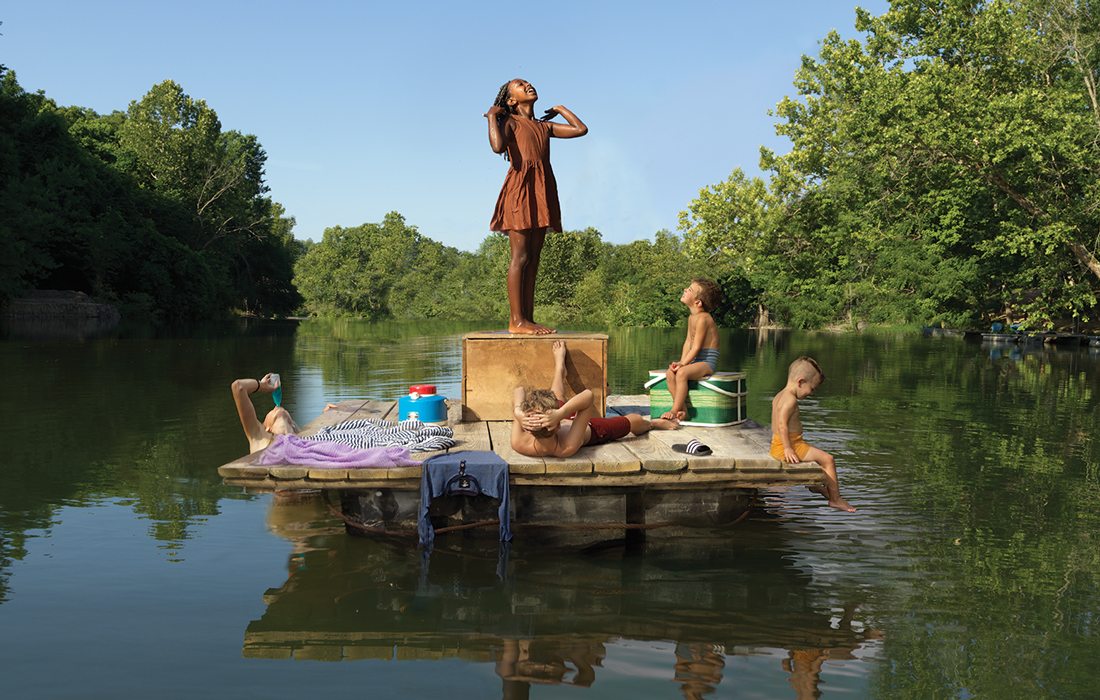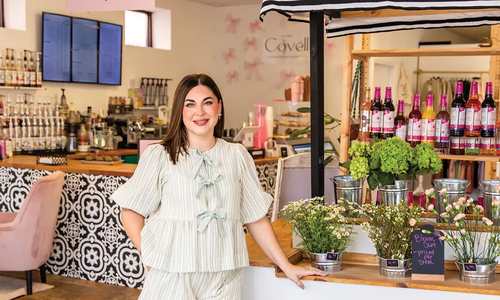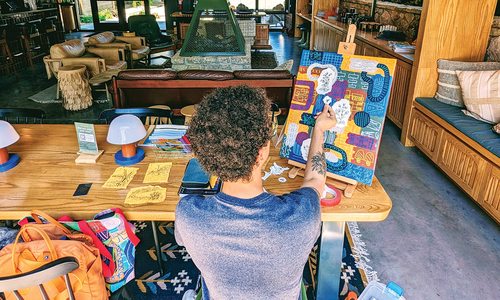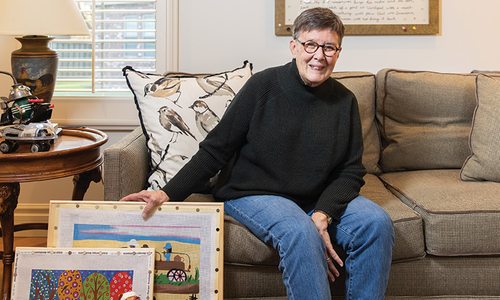
Things to Do
The Story of Julie Blackmon's River Series
The Ozarks are the backdrop for Springfield photographer, Julie Blackmon, whose work is celebrated and displayed around the world.
by Jordan Blomquist
Jun 2024

At age 19, Springfield native Julie Blackmon wore her first camera everywhere, its long strap casually slung over her shoulder. “I was kind of into it from the very beginning,” she says of her interest in photography. That Canon AE-1 was a catalyst for what is now a successful and fulfilling career in photography. Her work has graced the covers of TIME Magazine, the halls of museums around the world, the pages of the New York Times and the homes of celebrities like Reese Witherspoon and Elton John.
Blackmon began to consider photography as a career in 2005—taking photos of her children, then the neighbor’s children. Soon she started taking classes. “It went on to be about way more than just my immediate surroundings,” Blackmon says. She transformed her images into profound statements on social constructs and captured everyday moments in a charming, whimsical way.
Blackmon started as a photographer but evolved into an artist using photography as a medium. She is influenced by not only photography and its rich history but also paintings and illustrations. There is not merely a single thing that keeps Blackmon motivated to keep creating, because “I feel like it’s within me,” she says. “I can’t imagine stopping. There’s something cathartic about each piece I start.”
Specific to the river series, Blackmon was inspired by Missouri painter George Caleb Bingham—specifically his paintings titled The Jolly Flatboatmen and Fur Traders Descending the Missouri. The former inspired her photograph titled Flatboat, which is an updated take on the painting and mixes age, race and gender. “It is interesting to me how famous pieces of art—seeing them—allows you to see your own life, or my own life, in a different way,” Blackmon says. Flatboat was just acquired by the National Gallery of Art and will be shown alongside Bingham’s The Jolly Flatboatmen in an exhibit in 2026.
Blackmon has referred to her photographs as “a fantastical look at everyday life,” and she has no plans of abandoning that vision anytime soon. “You only see yourself as good as your next new piece,” Blackmon says. “The joy really comes from just doing the work itself.”
Learn more about Julie Blackmon and her work on her website.
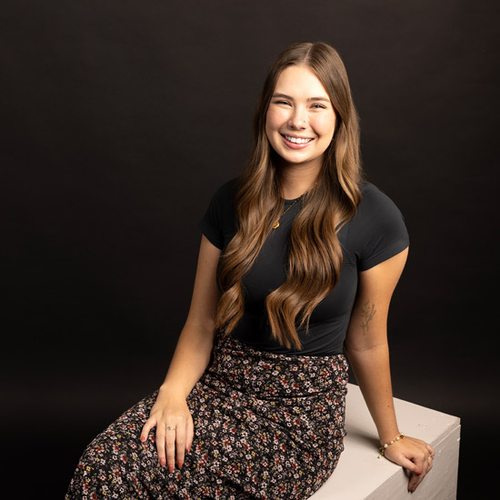
I’m Jordan Blomquist, 417’s Custom Publications Editor and Staff Writer. I joined the team in October 2023 after graduating from the University of Missouri. Outside of writing, I love traveling, visiting local coffee shops, cheering on the Kansas City Chiefs and listening to pop music (Taylor Swift and Gracie Abrams on repeat). I’m passionate about highlighting the Ozarks and giving a voice to its people. You can reach me at jblomquist@417mag.com.

